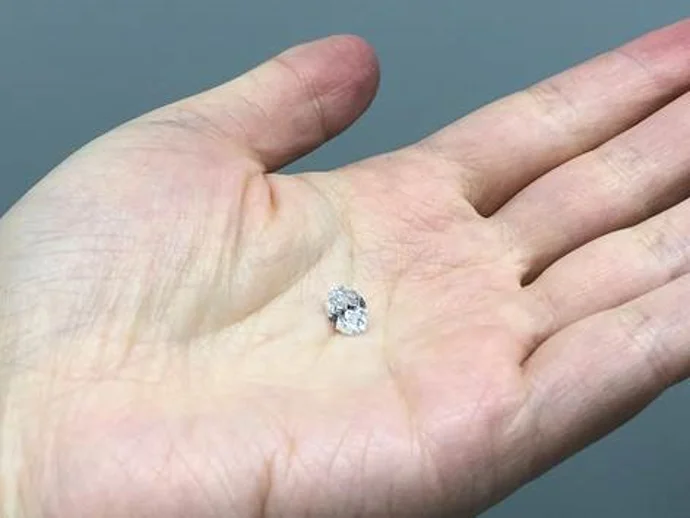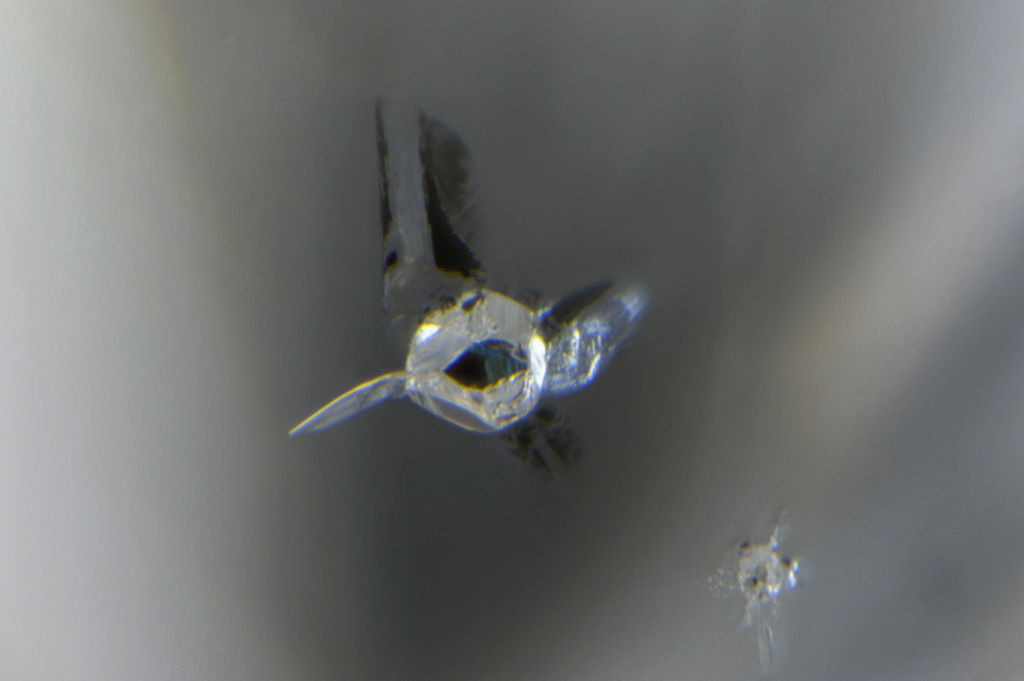Finding a rare type of diamond reveals the secrets of a water-rich environment in the ground
A team of scientists has found that a rare type of diamond may indicate that water can penetrate deeper into the earth's interior than previously thought.
Although more than 70% of our planet is covered in water, there are waters containing minerals more than 322 kilometers underground, including the upper mantle, the areas most affected by tectonic activity, the semi-elastic layer on which the crust “floats.”
Scientists have long believed that as the upper mantle transitions to the hotter and denser lower mantle, minerals can contain less water.
But in the new study, published Sept. 26 in Nature Geoscience, scientists found that diamonds contain inclusions, or small fragments of other minerals, and can contain more water and appear to have been present on the boundary between the upper and lower mantle.
The findings suggest that there may be more water on Earth than scientists previously thought, which could affect our understanding of the deep water cycle and plate tectonics.
The results were unexpected, according to the study's lead author, Tingting Gu, who is currently a mineral physicist at Purdue University in Indiana, but was a researcher at the Gemological Institute of America in New York City while conducting the study.
Jo and her colleagues examined type IaB, a rare type of diamond from the Karowe mine in Botswana, which forms deep in the earth and is often in the ground for a long time.
To study diamonds, the team used "non-destructive" forms of analysis including Raman micro-spectroscopy, which uses lasers to detect some of the material's physical properties, and X-ray diffraction to look at the internal structure of the diamond without cutting it.
The diamond, recently discovered in a diamond mine in Botswana, is an impurity-filled stone that contains traces of ringwoodite, ferropericlase, enstatite, and other minerals that indicate that diamonds formed 660 kilometers (410 miles) below the Earth's surface.
Within the diamond inclusions, scientists found a mineral called ringwoodite, which has the same chemical composition as olivine, which is the raw material for the upper mantle, but it forms under such extreme temperature and pressure that scientists did not find it until 2008 only, in a meteorite sample, according to joe.
Ringwoodite is usually found in the transitional zone between the upper and lower mantle, 410 to 660 km (255 and 410 miles) below the Earth's surface, and can contain much more water than the minerals "bridgemanite" and "ferroperclase", which are believed to be It dominates the lower part of the mantle (mantle), the study authors note.
But instead of the minerals normally found in the transition zone, the area around this "ringwoodite" were forms of minerals typical of the lower mantle.
Because encapsulated diamonds preserve the properties of these minerals as they appeared deep in the earth, scientists can find the temperatures these minerals endured and the pressures under them, and they estimate the minerals are about 660 km (410 miles) below the surface, near the outer limits of the transition zone.
The analysis further revealed that ringwood was most likely in the process of breaking down into the lower mantle minerals more typical in an aqueous or saturated environment, indicating that water may have penetrated from the transition zone into the lower mantle.
The scientists note that although previous research has found some forms of minerals from the lower mantle in diamond inclusions, the combination of materials in this inclusion is unique.
It was also not clear from previous findings, the study authors said, whether these minerals indicate the presence of water-containing minerals in the lower mantle. Because no one has directly sampled rocks more than 11 km (7 miles) below the Earth's surface, diamond inclusions are one of the few sources of minerals from the Earth's mantle.
Jo revealed that the findings may have implications for understanding the deep water cycle, or the water cycle between the planet's surface and the deep interior.
"The time scale of the water cycle is actually much shorter if it can be stored deeper," she added, meaning that water would take less time to renew itself if it was stored deeper in the earth.
The findings may also affect models of plate tectonics, with Jo indicating that she hopes scientists can incorporate the results of this study into models of how water in the mantle affects processes such as Earth's internal convection current. This current feeds plate tectonics by heating the Earth's mantle unevenly, causing the hottest parts to rise and moving the Earth's plates over millions of years.
Source :Websites




